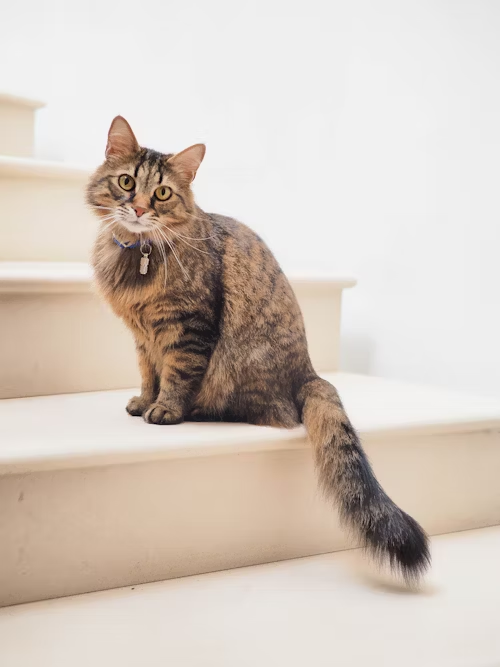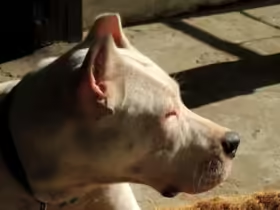A Complete Guide to Understanding Your Cat’s Body Language
Cats are often considered mysterious and independent creatures, but their body language can reveal a lot about their emotions and intentions. Understanding your cat’s body language is key to building a strong bond and ensuring their well-being. This guide will walk you through the various ways cats communicate through their body, helping you decode their signals and respond appropriately.
The Tail: A Versatile Communication Tool
A cat’s tail is one of the most expressive parts of its body, capable of conveying a wide range of emotions and messages. Here’s how to interpret different tail positions and movements:
1. Tail Held High
- A tail held high in the air often indicates confidence and contentment. Your cat feels secure in their environment and may be greeting you or showing that they are happy.
2. Tail Tucked Low
- When a cat’s tail is tucked low or between their legs, it typically signifies fear, anxiety, or submission. This position might be seen when your cat is in a new or frightening situation.
3. Tail Puffing Up
- A puffed-up tail usually indicates that a cat is frightened or trying to appear larger to ward off a perceived threat. It’s often accompanied by an arched back and wide eyes.
4. Tail Whipping or Thumping
- A cat that is rapidly whipping or thumping its tail is likely agitated or annoyed. This is a warning sign that your cat may need some space, and it’s best to give them some time to calm down.
5. Tail Twitching
- A twitching tail can indicate excitement or concentration, especially if your cat is hunting or playing. However, it can also signal mild irritation, so consider the context of the situation.
Ears: Windows to a Cat’s Mood
A cat’s ears are highly mobile and can provide significant insights into their emotional state. Here’s how to read your cat’s ears:
1. Ears Forward
- Ears pointing forward generally indicate that your cat is interested, curious, or content. This ear position is common when your cat is exploring or focused on something.
2. Ears Flat Against the Head
- When a cat’s ears are flattened against their head, it’s a sign of fear, anxiety, or aggression. This defensive posture often occurs when a cat feels threatened or cornered.
3. Ears Swiveling
- Cats with ears that swivel back and forth are likely trying to locate a sound or are feeling uncertain. This ear movement can also suggest that your cat is on high alert or cautious.
4. Ears Perked Up
- Perked-up ears indicate that your cat is paying close attention to something. This could be a sound, movement, or an object that has caught their interest.
Eyes: The Windows to the Feline Soul
A cat’s eyes can tell you a lot about their emotions and intentions. Paying attention to their pupils, eye contact, and blinking patterns can help you understand what they’re feeling:
1. Slow Blinking
- A slow blink from your cat is often referred to as a “cat kiss.” It’s a sign of trust and affection, indicating that your cat feels comfortable and safe with you. You can return the gesture by slow blinking back at your cat.
2. Dilated Pupils
- Dilated pupils can indicate excitement, fear, or stress. If your cat’s pupils are dilated in a well-lit room, they may be feeling anxious or agitated.
3. Narrowed Eyes
- Narrowed eyes often suggest that your cat is feeling relaxed or sleepy. However, in some contexts, it can also indicate suspicion or irritation.
4. Direct Stare
- A direct stare from your cat can be a sign of dominance or aggression, especially if accompanied by other warning signs like a twitching tail or flattened ears. In other cases, a stare might simply mean your cat is curious or focused on something.
Body Posture: Reading the Whole Picture
Your cat’s overall body posture provides context to other signals like tail movement, ear position, and eye behavior. Understanding the nuances of feline body posture can help you better interpret your cat’s emotions:
1. Arched Back
- An arched back, especially when combined with a puffed-up tail, indicates fear or defensive aggression. Your cat is trying to appear larger to deter potential threats.
2. Curled Up
- A cat that is curled up with their tail wrapped around their body is typically relaxed and comfortable. This is a common resting position, showing that your cat feels safe.
3. Lying on Their Back
- When a cat lies on their back and exposes their belly, it can be a sign of trust and relaxation. However, this doesn’t always mean they want belly rubs—many cats are sensitive about their belly area and may react defensively if touched.
4. Crouched with Tense Muscles
- A crouched posture with tense muscles indicates that your cat is feeling stressed, fearful, or ready to pounce. This position is often seen when a cat is observing something intently or preparing to defend itself.
5. Sideways Stance
- A sideways stance with an arched back can indicate a cat is feeling threatened but is trying to avoid a direct confrontation. This posture is common during encounters with other animals.
Vocalizations: Complementing Body Language
While body language is a primary mode of communication for cats, vocalizations often complement these physical signals. Understanding common cat sounds can help you further interpret your cat’s behavior:
1. Purring
- Purring is typically associated with contentment and relaxation, but it can also occur when a cat is anxious, injured, or unwell. Pay attention to the context in which your cat is purring to understand its meaning.
2. Hissing
- Hissing is a clear sign of fear or aggression. Your cat is warning others to back off and is prepared to defend itself if necessary.
3. Meowing
- Cats meow for various reasons, including seeking attention, expressing hunger, or communicating discomfort. The tone and frequency of the meow can provide clues about what your cat wants.
4. Chirping
- Chirping is often heard when a cat is watching birds or other prey. It’s thought to be an expression of excitement or frustration at not being able to catch the prey.
Recognizing Stress Signals
It’s important to recognize when your cat is feeling stressed or uncomfortable, as prolonged stress can lead to health issues or behavioral problems. Here are some common signs of stress in cats:
1. Excessive Grooming
- While grooming is a normal activity for cats, excessive grooming can be a sign of stress. Cats may over-groom to the point of causing bald spots or skin irritation.
2. Hiding
- A cat that frequently hides may be feeling anxious or stressed. If your cat suddenly starts hiding more than usual, it could indicate that something in their environment is causing them distress.
3. Aggression
- Uncharacteristic aggression, such as hissing, swatting, or biting, can be a sign of stress or fear. It’s important to identify the cause of the aggression and address it appropriately.
4. Loss of Appetite
- A loss of appetite is a common sign of stress in cats. If your cat refuses to eat or shows a decreased interest in food, it may be time to consult a veterinarian to rule out any underlying health issues.
Enhancing Communication with Your Cat
Understanding your cat’s body language is just the first step in improving your communication. Here are some tips for enhancing your relationship with your cat:
1. Spend Quality Time Together
- Regularly engage in activities that your cat enjoys, such as playtime, grooming, or simply sitting together. This helps build trust and strengthens your bond.
2. Respect Their Space
- Cats value their personal space, so it’s important to respect their boundaries. If your cat is displaying signs of needing space, such as flattening their ears or whipping their tail, give them time to relax on their own.
3. Be Observant
- Pay close attention to your cat’s behavior and body language. Each cat is unique, and over time, you’ll learn to recognize the subtle cues that indicate how they’re feeling.
4. Provide a Comfortable Environment
- Ensure your cat’s environment is comfortable and stress-free. This includes providing safe spaces for hiding, comfortable resting areas, and opportunities for mental and physical stimulation.
Conclusion: Strengthening Your Bond Through Understanding
Cats may not be as outwardly expressive as dogs, but their body language offers a wealth of information about their emotions and needs. By learning to read and respond to your cat’s body language, you can foster a deeper connection and ensure your feline friend feels safe, loved, and understood.
Remember,
every cat is unique, and understanding their individual preferences and quirks is key to a happy and harmonious relationship. By being attentive to the signals your cat is sending and responding with empathy, you’ll not only strengthen your bond but also contribute to your cat’s overall well-being.











Leave a Reply